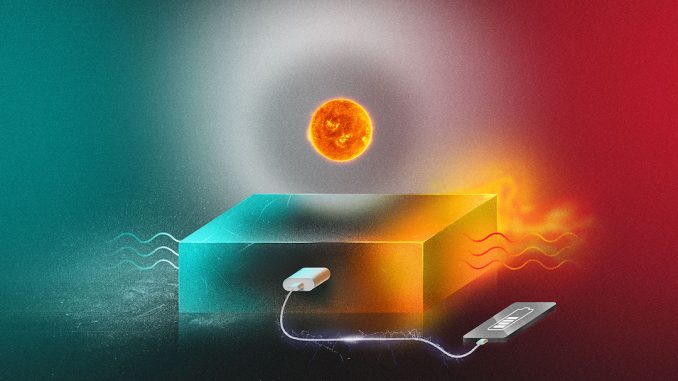
A research team has designed an energy system that can capture solar energy, store it for nearly two decades, and then release it on-demand, and has now gone a step further with the innovation by successfully using it to produce electricity.
By connecting the system to a thermoelectric generator, scientists at Chalmers University of Technology in Sweden could have cracked the code for the future of self-charging devices that draw power from stored renewable energy.
“This is a radically new way of generating electricity from solar energy. It means that we can use solar energy to produce electricity regardless of weather, time of day, season, or geographical location,” explained research leader Kasper Moth-Poulsen, Professor at the Department of Chemistry and Chemical Engineering.
“It is a closed system that can operate without causing carbon dioxide emissions,” he added.
To put it simply, the crux of the emerging technology is based on a specially-designed molecule that changes shape upon coming into contact with sunlight, otherwise known as Molecular Solar Thermal Energy Storage (MOST) system.
In its latest iteration, scientists in Shanghai have hooked the system up to a compact thermoelectric generator, thereby converting the stored solar energy into electricity.
Researcher Zhihang Wang expressed that as the generator is an ultra-thin chip, it could potentially be integrated into electronic devices, including headphones, smart watches, and smartphones.
“So far, we have only generated small amounts of electricity, but the new results show that the concept really works. It looks very promising,” he quipped.
Going forward, the team is looking to streamline the system and increase the amount of electricity and heat that can be extracted. Once it becomes more cost-effective to be produced on a mass scale, it could then take off as an alternative source of energy to powering our devices anytime, anywhere.
[via
http://www.designtaxi.com/news/418380/Solar-Energy-Can-Now-Be-Stored-For-18-Years-And-Released-On-Demand/

Leave a Reply